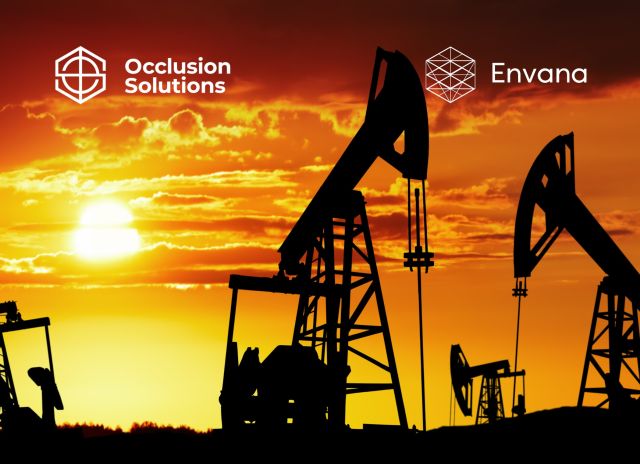
Mike Orr, president of Occlusion Solutions, believes that this isn’t a 10-well problem or a hundred-well problem, but a “couple hundred thousand-well problem.” (Source: Envana)
Dried up wells may have ceased revenue generation for E&Ps, but they are definitely still generating problems by releasing greenhouse gases into the air and leaking into waterways.
In 2021 the federal government tried to tackle some of these issues with the approval of a $4.7 billion budget for the Orphaned Wells Program to support plugging and abandonment operations across federal, tribal, state and private lands.
Yet the problem still persists. The U.S. Environmental Protection Agency (EPA) estimates there are 3.7 million abandoned oil and gas wells in the U.S., with only around 42% having been plugged.
RELATED
Orphaned Wells: The Forgotten Problem
“I applaud all the work that’s being done today … but this isn’t a 10-well problem or a hundred-well problem or a thousand-well problem. It’s a couple hundred thousand-well problem,” Mike Orr, president of Occlusion Solutions, told Hart Energy. “So whatever we put in place today, we have to have a platform that allows us to move with regulation, to move with standards and to move with the environment.”

Occlusion Solutions, a decommissioning services provider, recently partnered with emissions management software company Envana to solve the big issue.
Their mission: rather than the cradle-to-grave product lifecycle, they are treating abandoned well plugging as a “grave-to-grave process,” Orr said. “You’ve got a dead well that we want to actually further retire it and basically leave it better than we found it.”
Occlusion’s Go2Green method offers efficiency, predictability and real-time adaptability in the well retirement process. The collaboration with Envana adds software into the mix to meet increasing expectations for emissions reporting from well retirement services, while also ensuring compliance with state emissions management requirements.
Go2Green is “a process of defining monitoring at the wellhead” and making that into an “auditable piece of bulletproof data,” Orr said. The purpose of Go2Green is to bring the well back to its pre-production natural state, he continued.
Envana plays a pivotal role in this process as its measurements of leaking greenhouse gas emissions have a centrally stored and managed location. This limits the risk of inconsistency and the possibility of error, Roxana Nielsen, Envana’s vice president of product development, told Hart Energy.
Envana and Occlusion’s collaboration streamlines the carbon credit process to leapfrog over the problems of scale and speed of adoption.
Currently, finding and retiring wells is a slow, manual process involving questionnaires that locate the well and its proximity to human populations. If the well is emitting a high volume of gas, those are retired first before moving to the next one. The process can take weeks to prepare a carbon credit as operators need to put together documentation that justifies receiving a credit.
Envana’s software makes this process much smoother for all parties involved.
“The good news is we have a robust performance system so we can handle a large number of wells at the same time,” Nielsen said. “One of the things [Occlusion] is doing that’s different is they’re monitoring with digital tools and getting a lot of data points. So they’re generating a lot of data, and that’s an important aspect for them that we’d be able to handle that.”

The advanced scaling solutions that Envana provides enables the Go2Green process to assist operators on another front as well: carbon credits.
“The carbon credit market for this particular venture is kind of the ‘Wild, Wild West.’ The challenge with this right now is there’s no stability in the market,” Orr There’s no stability with the states knowing whether they can take these credits and issue them and then put that back into their coffers to continue to plug,” Orr said.
Occlusion and Envana are trekking ahead without the legislative paved road that would make potential revenue streams for carbon credits more solid.
The potential benefits were too good to pass up.
“If we can enable them to generate these credits and link them up to markets and help them do that, that’s one thing that I see as a potential future,” Nielsen said. And other companies attempting to offset their emissions might even see these credits as things that they can use to achieve that goal, she added.
Recommended Reading
NGP Backs Wing Resources with $100MM to Buy Permian Mineral Interests
2025-04-02 - Wing Resources VIII, which is backed by NGP Royalty Partners III, will focus on acquiring “high-quality” mineral and royalty interests across the Permian Basin, the company said.
Boardwalk Project to Grow Southern Access for Appalachian NatGas
2025-04-02 - Midstream company Boardwalk Pipeline is holding an open season for future new capacity on the Texas Gas Transmission pipeline.
Exxon Mobil Vice President Karen McKee to Retire After 34 Years
2025-04-02 - Matt Crocker will succeed Karen T. McKee as vice president of Exxon Mobil and president of its product solutions company.
Paisie: How a World in Flux Impacts Oil Prices
2025-04-02 - Sanctions, tariffs and production strategies are buffeting crude markets as wild cards like tariffs and geopolitical conflicts make headlines.
Oil Prices Fall into Negative Territory as Trump Announces New Tariffs
2025-04-02 - U.S. futures rose by a dollar and then turned negative over the course of Trump's press conference on April 2 in which he announced tariffs on trading partners including the European Union, China and South Korea.
Comments
Add new comment
This conversation is moderated according to Hart Energy community rules. Please read the rules before joining the discussion. If you’re experiencing any technical problems, please contact our customer care team.




